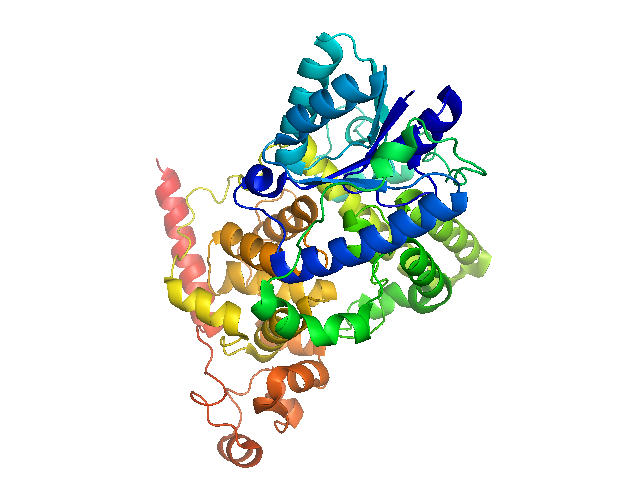 Several years ago, I hosted Professor Thomas Carell from Munich, for a seminar at Sheffield. He was presenting work from his group on the fascinating, solar powered enzyme, DNA Photolyase. During a conversation after the talk, he mentioned the recently discovered class of proteins called cryptochromes. Since then I have been meaning to read more. However the recent excitement over Quantum Biology brought the cryptochromes to my attention again. The image above is CRY1, a cryptochrome associated with circadian rhythm in the experimental plant, Arabidopsis thaliana. The term crypto chrome comes from the Greek expression for hidden colour.
Several years ago, I hosted Professor Thomas Carell from Munich, for a seminar at Sheffield. He was presenting work from his group on the fascinating, solar powered enzyme, DNA Photolyase. During a conversation after the talk, he mentioned the recently discovered class of proteins called cryptochromes. Since then I have been meaning to read more. However the recent excitement over Quantum Biology brought the cryptochromes to my attention again. The image above is CRY1, a cryptochrome associated with circadian rhythm in the experimental plant, Arabidopsis thaliana. The term crypto chrome comes from the Greek expression for hidden colour.So what are the key features of a cryptochrome. From a structural perspective, as you can see from CRY1, the general layout comprises a compact set of alpha helices with an alpha helical tail (there is a wedge of 3 beta strands as well). However, let me discuss the structure and function of the related DNA Photolyase first. The two images below are taken from an open access review by Thompson and Sancar. On the left, even though the orientation is different, I think you can see the global similarities between CRY1 (above) and photolyase. The two arrows point to two quite different chromophores (the molecules that bind tightly to the protein and manage its electron channeling activities). MTHF (methyltetrahydrofolate) is a derivative of folic acid (you may have heard of this referred to as a form of Vitamin B) and FADH (flavin adenine dinucleotide) is a common element of redox enzymes, and is also a vitamin, in this case, vitamin B2. The dotted square on the surface is the binding site for the DNA lesion (the name given to genome damage sites) and the blue colour shows the positive charges of the protein, that accommodate the negatively charged surface of double helical DNA.
DNA photolyase harnesses photons of blue light to fix the uv induced formation of thymine dimers in DNA. The chromophores serve to orchestrate a cyclic electron transfer process which disrupts the lesion, called a thymine dimer (an inappropriately bonded pair of thymines), thereby restoring the genome back to its normal state.
How does all of this make for a coherent story. Well, in part it doesn't, but it does illustrate that protein sequences can diverge (change through evolutionary time) and collect new functions. It is clear that the capture of photons and their subsequent harnessing to drive unfavourable chemical reactions (photolyase) or to promote regulated on off switching events (CLOCK), provides us with a growing set of examples of how evolution has molded genes over time. I always think of photosynthesis when I think of light harvesting, but these two classes of molecules show how Life on Earth has adapted more widely to a planet driven by solar energy. The photolyase harnesses blue light to fix the problems caused by excesses of uv light and the cryptochromes have established a nice working relationship between the daily appearance and disappearance of the sun and organismal growth and behaviour!
No comments:
Post a Comment